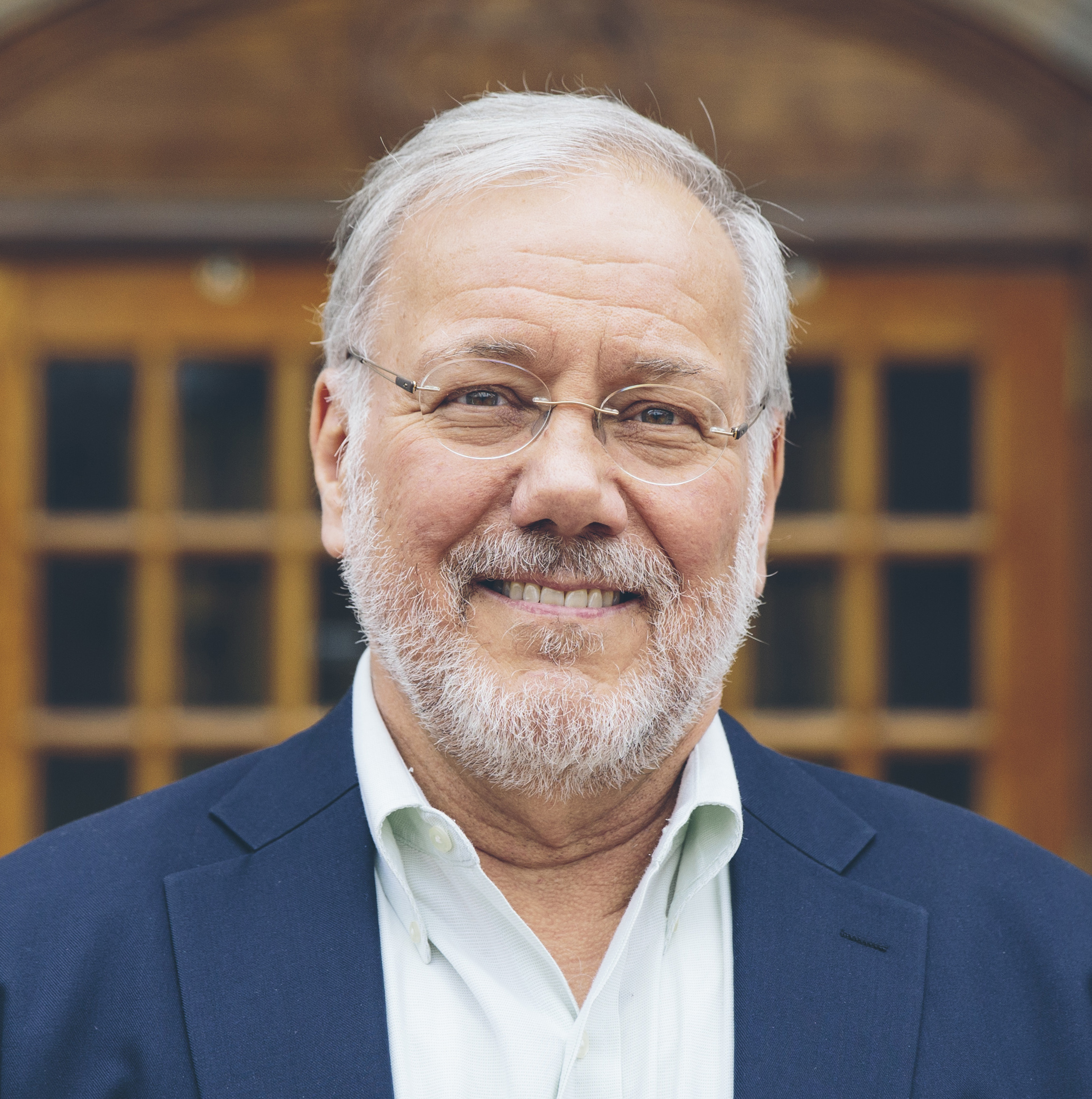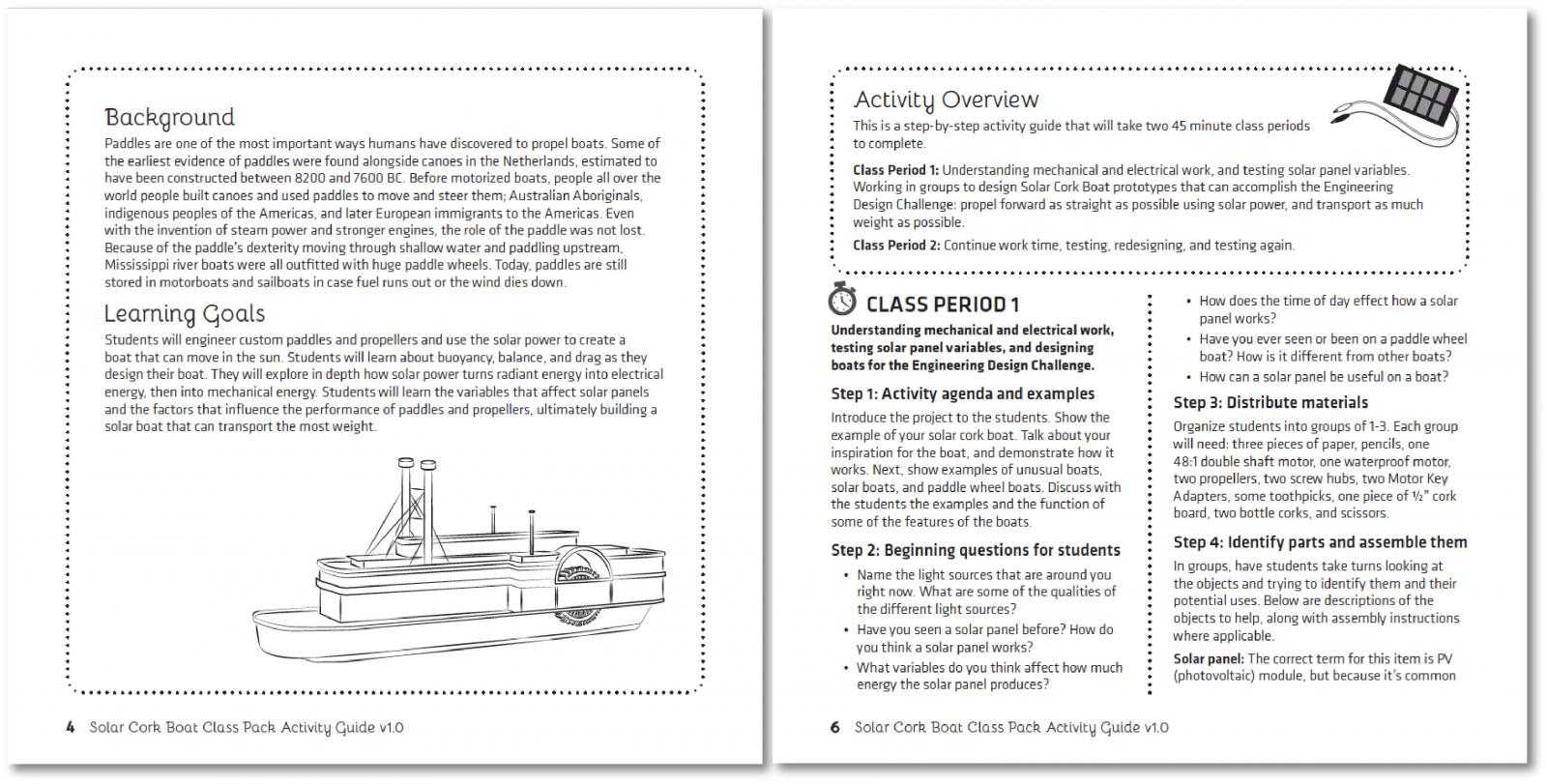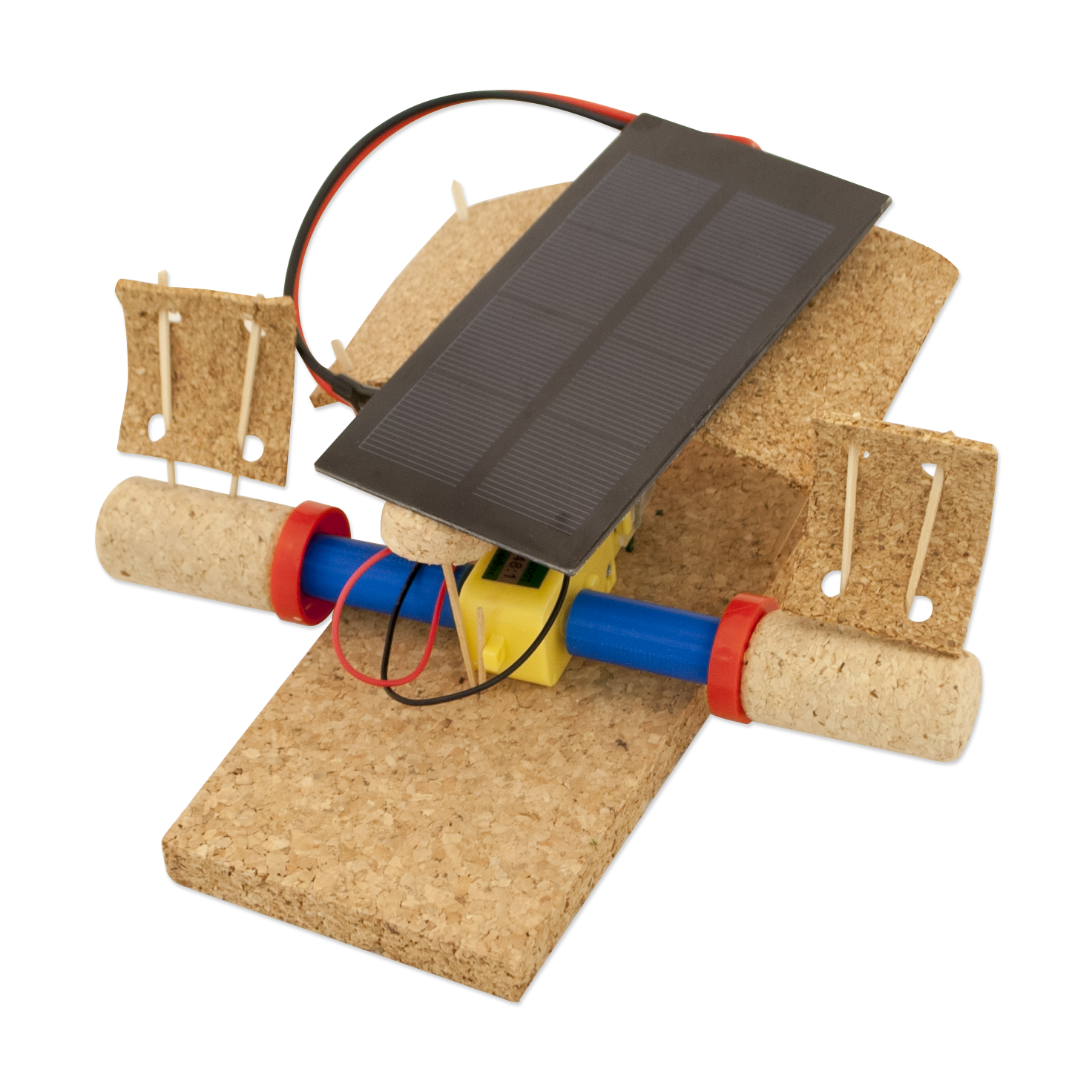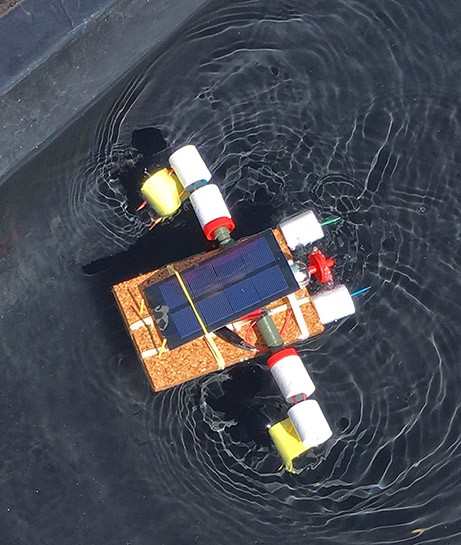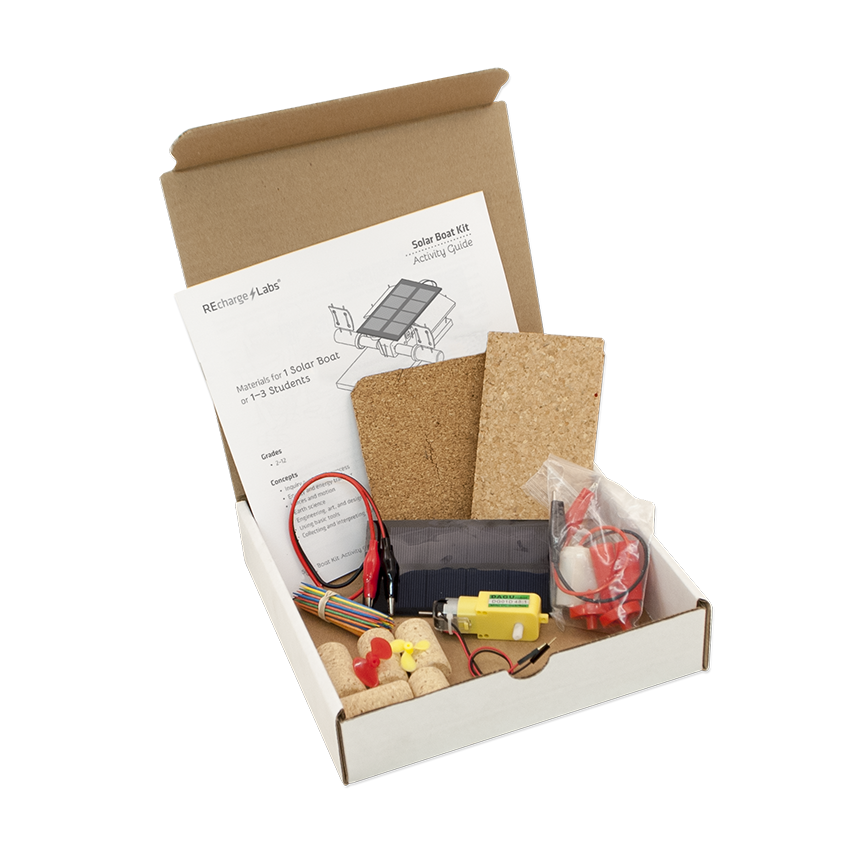Science 2.0: Developing the Knowledge Constructor
By sstuckey
Posted on 2016-12-13
Our past two columns focused on the International Society for Technology in Education (ISTE) Empowered Learner standard and Digital Citizen standard, respectively. This month, we discuss the ISTE’s Knowledge Constructor standard.
When students become a Knowledge Constructor, they should be able to synthesize science information from a variety of resources into a representation of their understanding. Students must meet four performance indicators to achieve this skill.
Meeting the performance indicators
First, students need to “plan and employ effective research strategies to locate information and other resources for their intellectual or creative pursuits” (ISTE 2016) (italics added). Students must be able to find relevant information to a topic or their unit of study, especially as the amount of information on the internet will grow exponentially over time. Google operators can generate specific search results and can help students develop effective research strategies. It is also important for students to cite their resources. Students can use online bookmarking tools such as Diigo and learn how to employ Add-Ons in Google Docs to easily create bibliographies.
Directly related to the prior indicator is the ability to “evaluate the accuracy, perspective, credibility, and relevance of information, media, data, or other resources” (ISTE 2016). Good classroom resources are available to teach students how to evaluate online information. One activity leads students to complete a science project that aims to save a fictional endangered species, known as the Pacific Northwest Tree Octopus. Scientifically, this creature seems ridiculous. Yet the activity teaches students to filter online information while finding resources to support or refute the validity of the information. Most students quickly realize that the creature is fictional. Some students, however, create an activity comprised of irrelevant facts that seem to support the existence of such an animal. We must reinforce the importance of corroboration.
Once students have collected a set of reliable resources, it is time for them to “curate information from digital resources using a variety of tools and methods to create collections of artifacts that demonstrate meaningful connections or conclusions.” Using graphic organizers, such as Lucid Chart, Mindomo, or Mind 42, students can connect concepts through articulated maps that structure and organize their thoughts in an actionable way.
For example, students could research the environmental impact seen in communities that adopt consistent and reliable recycling methods. By compiling their research, including case studies, scientific research, and reports of new technologies that make recycling more affordable, students can intelligently discuss how their own community can develop better recycling programs. Curation also implies that students will publish their work publicly. The tools mentioned above can all display work online.
The fourth and final indicator ensures that students can “build knowledge by actively exploring real-world issues and problems, developing ideas and theories in pursuing answers and solutions” (ISTE 2016). The class curriculum should foster an environment for students to explore their passions. Teachers need to personalize lessons so students become invested in their own learning, where they construct knowledge in meaningful ways that allow them to explore problems that may not yet exist on a macro scale.
Conclusion
The best way to empower students is to have them solve real-world scientific challenges by focusing on unidentified problems. Authentic work is best for students. In the next issue, we will discuss the Innovative Designer standard.
Ben Smith (ben@edtechinnovators.com) is an educational technology program specialist, and Jared Mader (jared@edtechinnovators.com) is the director of educational technology, for the Lincoln Intermediate Unit in New Oxford, Pennsylvania. They conduct teacher workshops on technology in the classroom nationwide.
Reference
International Society for Technology in Education (ISTE). 2016. The 2016 ISTE standards for students. Arlington, VA: ISTE. www.iste.org/standards/standards/for-students-2016
Editor’s Note
This article was originally published in the December 2016 issue of The 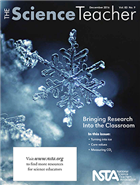 Science Teacher journal from the National Science Teachers Association (NSTA).
Science Teacher journal from the National Science Teachers Association (NSTA).
Get Involved With NSTA!
Join NSTA today and receive The Science Teacher,
the peer-reviewed journal just for high school teachers; to write for the journal, see our Author Guidelines, Call for Papers, and annotated sample manuscript; connect on the high school level science teaching list (members can sign up on the list server); or consider joining your peers at future NSTA conferences.
What's so Special about Disciplinary Core Ideas? (Part 1)
By Joe Krajcik
Posted on 2016-12-12
I still remember the day Helen Quinn asked if she could visit me at the University of Michigan where I was a professor to discuss the Framework for K–12 Science Education (Framework) and possible roles I might play in its development. I was honored that I was being considered to lead the team on coming up with the big ideas (now called disciplinary core ideas, or DCIs) for physical science. What a privilege and huge responsibility to be part of team to decide the key, big ideas that all students need to know and use to make sense of the world (explain and predict phenomena and find solutions to problems). Not only would our work provide the substance for the Framework, it also would provide the foundation for the development of new K-12 science standards—the Next Generation Science Standards (NGSS)—released in 2013. The physical science team was one of four; Life Science, Earth and Space Science, and Engineering, Technology, and Applications of Science were the other three disciplinary areas. It was a daunting task, particularly because each discipline could pick no more than four big ideas! How could chemistry be boiled down to four big ideas, let alone chemistry and physics? Of course, the core ideas are broken down into component ideas, but it is the disciplinary core ideas that provide the structure and coherence.
From the start of this effort the disciplinary core ideas were going to be different than the science ideas presented in previous standards documents. Don’t get me wrong, the Framework built on important documents such as the Benchmarks for Science Literacy (AAAS, 1993) and the National Science Education Standards (NRC, 1996). These documents have an important place in the development of science education; they helped guide our nation in science education for two decades and still have a powerful influence on what happens in science classrooms. But the vision of Framework, based on what we know about how students learn, was to help learners develop conceptual knowledge of important ideas that could be used throughout life and get richer and deeper with time. The core ideas serve as a conceptual framework that can be further developed, allowing learners to understand critical ideas about the world in which they live. For example, PS 1 Matter and Its Interactions, supports all learners in understanding the structure, properties, and interactions of matter so they can explain important phenomena, such as how there is such diversity of different types of matter (substances) in the world despite there being relatively few types of building blocks (atoms). Of course, a full understanding of this question and explanation of these phenomena also overlap with PS 2: Motion and Stability: Forces and Interactions and PS 3: Energy. Another example is the Life Science Core Idea LS 1, From Molecules to Organisms: Structure and Process, that provides students with the knowledge to explore questions related to how organisms live, grow, respond to their environment, and reproduce. A deep conceptual understanding of this core idea and its components, allows learners to understand where the energy and matter come from to help us grow. A full understanding of the phenomena, however, also requires understanding of PS 1: Matter and Its Interactions and PS 3: Energy.
This blog and those that follow will provide some reflections about the DCIs, but before I go further I have to acknowledge the important role of all three dimensions in making sense of phenomena. Yes, DCIs are critical, but to make sense of phenomena and find solutions to problems, all three dimensions play a critical role. Science and engineering practices (SEPs), disciplinary core ideas, and crosscutting concepts (CCCs) work together to support students in making sense of phenomena or designing solutions. You cannot learn the ideas of science in isolation from the doing and you cannot learn the practices of science in isolation from the content of science. To develop deep, usable understanding of the DCIs, it is necessary for a learner to use SEPs and CCCs. The basic premise of the Framework is that one cannot learn one without learning the other. The three dimensions work together to help students make sense of phenomena or design solutions to problems, and as students make sense of phenomena they develop deeper, more usable understanding of the dimensions. It basically boils down to “doing science,” or “doing engineering.” Convincing evidence exists that understanding DCIs will only result when core ideas are integrated with SEPs and CCCs, and understanding SEPs will only result when integrated with DCIs and CCCs (NRC, 2007).
In this blog series, I’m going to explore the DCIs in more depth, including the ideas that DCIs serve as conceptual tools, that they provide explanations for phenomena, and that they develop across time. The first of these follows below and the other two ideas will follow in my next two blogs.
Disciplinary Core Ideas Serve as Conceptual Tools
I’m frequently asked how DCIs differ from science concepts. Energy is energy? Evolution is evolution? Is there a difference in how the Framework presents them and how they were treated in the past? I’ve already mentioned how the DCIs form a conceptual framework; now let’s dig a bit deeper into that idea.
By their very structure, core ideas are different than how standards were previously structured. Each core idea is a conceptual whole that can guide student thinking, but they also link to other core ideas to form even deeper and more meaningful understandings that students can use to make sense of the world.
DCIs support a new vision for science education that moves classroom teaching away from focusing on numerous disconnected science concepts that students memorize, to learning environments where students develop connected understanding of a few powerful ideas that they can use along with SEPs and CCCs to make sense of real-world phenomena or design solutions to problems. The Framework focuses on a limited number of DCIs that students can use to describe and predict phenomena that they experience in their lives. In all, there are 13 DCIs: 4 from Physical Science, 4 from Life Science, 3 from Earth and Space Science, and 2 from Engineering, Technology, and Applications of Science. The list of DCI’s follows. Click here to explore subcomponents.
LS: Life Science
LS1: From Molecules to Organisms: Structures and Processes
LS2: Ecosystems: Interactions, Energy, and Dynamics
LS3: Heredity: Inheritance and Variation of Traits
LS4: Biological Evolution: Unity and Diversity
ESS: Earth and Space Science
ESS1: Earth’s Place in the Universe
ESS2: Earth’s Systems
ESS3: Earth and Human Activity
PS: Physical Science
PS1: Matter and Its Interactions
PS2: Motion and Stability: Forces and Interactions
PS3: Energy
PS4: Waves and Their Applications in Technologies for Information Transfer
ETS: Engineering, Technology and the Application of Science
ETS1: Engineering Design
I like to think of disciplinary core ideas as conceptual tools that learners can use to make sense of phenomena or solve problems. They are conceptual tools because learners can access them when needed to make sense of a situation. Moreover, they are conceptual tools because as a learner uses them to explore and explain phenomena and solve problems throughout their lives, they learn more about these core ideas and they become more deeply connected to other ideas.
Click here to read What’s So Special about Disciplinary Core Ideas (Part 2)
Click here to read What’s So Special about Disciplinary Core Ideas (Part 3)
I would love to hear your ideas, questions, and feedback on this blog. Tweet me at @krajcikjoe or email krajcik@msu.edu. If you want to learn more about the disciplinary core ideas take a look at our new book just published by NSTA Press; Disciplinary Core Ideas: Reshaping Teaching and Learning, edited by myself as well as Ravit Duncan, and Ann Rivet.
Joe Krajcik (Krajcik@msu.edu) is a professor of science education at Michigan State University and director of the Institute for Collaborative Research for Education, Assessment, and Teaching Environments for Science, Technology and Engineering and Mathematics (CREATE for STEM). He served as Design Team Lead for both the Framework and the NGSS.
Editor’s note: This blog is the first in a series of three by Joe Krajcik that explore the NGSS disciplinary core ideas.
References
American Association for the Advancement of Science. 1993. Benchmarks for science literacy. New York: Oxford University Press.
National Research Council (NRC). 2012. A framework for K – 12 science education: Practices, crosscutting concepts, and core ideas. Washington DC: National Academies Press.
NGSS Lead States. 2013. Next generation science standards: For states, by states. Washington, DC; National Academies Press.
The mission of NSTA is to promote excellence and innovation in science teaching and learning for all.
Future NSTA Conferences
2017 National Conference
STEM Forum & Expo
Follow NSTA
Statistics for younger students
By Mary Bigelow
Posted on 2016-12-10
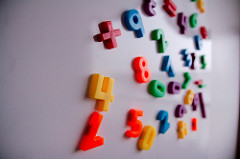 Our math department wants students in all subjects and grade levels to do more with statistics and graphing. I do graphing with my students in elementary science, but are younger students ready for statistics? —G., Pennsylvania
Our math department wants students in all subjects and grade levels to do more with statistics and graphing. I do graphing with my students in elementary science, but are younger students ready for statistics? —G., Pennsylvania
The science and engineering practices in the Next Generation Science Standards (NGSS) include several that incorporate statistics and graphing: Analyzing and Interpreting Data, Using Mathematics and Computational Thinking, and Obtaining, Evaluating, and Communicating Information.
I ran your question past a colleague who is data specialist and researcher (and a former elementary teacher). She agreed it’s all in the strategies you use and how you present problems to younger students. Keep it simple to start!
We brainstormed some concepts that younger students could understand and use as part of their science investigations:
- Determine central tendencies—mean, median, mode—using concrete examples such as the length of their hands or the height of plants they are growing. They could calculate the mean (numerical average), the median (list all values from lowest to highest and determine the midpoint value), and mode (the most common value). How close are these to each other? What is the range of values (highest and lowest)?
- Fine-tune (or disaggregate) these values by gender, age, type of plant, etc. The questions they ask will determine how they analyze this. (Are boys’ hands larger than girls’?)
- Doing a scatter plot is a good way to introduce correlation. Do some values increase together (positive correlation)? And emphasize that correlation is not causation!
Many teachers go into panic mode at the beginning of the required statistics class in grad school. But with the apps and websites available today, a lot of the arithmetic is easy. The more important and more interesting challenge continues to be understanding the underlying concepts and choosing the right process.
Resources:
Photo: https://www.flickr.com/photos/janih/8541889792/
We Are Not Forgotten: How One Teacher's Dedication Brought Rewards for Many
By Guest Blogger
Posted on 2016-12-09

“Mrs. Conerly, you really do care about us!” “Mrs. Conerly why do you do this for us?” “ Mrs. Conerly no one has ever helped us like this before!” In my time at South Pike Senior High School, these were continuous comments from my scholars for five years. I soon began to know why. I was teaching in a low-income, Title I, critical needs school—and it showed. Many of my students were from single parent, female homes, operating solely on the income provided by their mothers. Many of my students were parents to siblings, to their own children, or about to become parents. Some were retainers or could not read past elementary grade level. I realized it was up to me to empower and encourage them. And I wondered how exactly I was supposed to do that with the resources that I had (or lack thereof)? And I answered the challenge, with a big “YES!” It took a little bit of faith and a whole lot of dedication.
Against All Odds
As I began this journey I knew that the end goal was to ensure that my students were no longer forgotten. That meant it was going to take me getting the word out to cause people to remember them. I knew that in order to do that I needed to do something to cause “good attention and awareness” to be brought to our school and school district. I began to do research once I was guided in the right direction by Past National Science Teachers Association President Juliana Texley. I came upon the NSTA site for awards and recognitions. Being an educator of color I decided to try for the Shell Urban Educator Development Award…and I won! Finally, our rural urban area was on the map! All because I filled out an application with the odds stacked against me. The following year I was encouraged to compete for the Shell Lab Science Challenge. And once again, I won. Once again with the odds stacked against me. As always, not thinking about myself, I decided to enter the competition as a team. A 20-plus-year veteran, a lead teacher, a first-year teacher, and I brought home the grand prize of $20,000!
Our students were overwhelmed with astonishment that we were in the news for something other than low test scores or mediocre athletics. They made it known that they were no longer forgotten! Someone actually cared enough to bring funds and a winning spirit back to them.
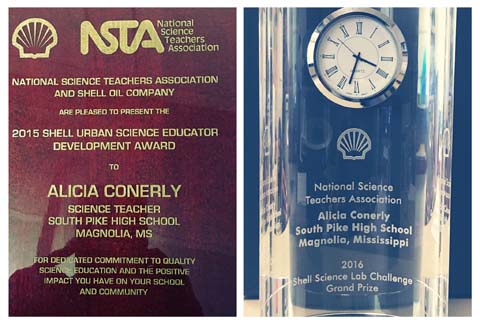
Opening Doors and Sharing the Vision
Winning has opened so may doors. My name is now known both locally and nationally. However, none of it means a thing if my scholars are still falling behind. The greatest gift was that my students carried that “We are NOT forgotten” and winning spirit into testing this past year. I received the highest scores I have ever had overall for proficiency or higher on the state exam. My scholars bought into the vision!
Now, let me encourage you to buy into the winning spirit. Do you feel like your scholars are amongst the forgotten? Is your school or district struggling? Do you need motivation to continue to stay in the education race? If you have answered yes to any of these questions, I encourage you to apply. It is time to be remembered again! If not for you, then for those individuals that you call your children for at least 187 days or more!
 Get more information about the Shell Urban Science Educator Development Award and the Shell Science Lab Challenge.
Get more information about the Shell Urban Science Educator Development Award and the Shell Science Lab Challenge.
Blog author Alicia Conerly taught Elementary, Middle, and High school science for seven and a half years. She is the first Science Specialist for the Hazlehurst City School District in Hazlehurst MS.
The annual NSTA Awards and Recognition Program recognizes exceptional and innovative science educators. With more than a dozen awards to choose from, there are opportunities for science educators at every level. All entries must be received by 11:59PM EST on 12/15/2016, via online submission, with the exception of the Shell Science Teaching Award, whose deadline is 1/06/2017. Entry fees are free. The NSTA Awards and Recognition recipients will be honored during a black-tie dinner gala on 3/31/2017 in Los Angeles, California, at the NSTA National Conference on Science Education.
For more information, contact Amanda Upton, the NSTA Awards and Recognition Program liaison, at 703.312.9217 or awards@nsta.org, or apply online by clicking on a link below.
Click on an item in the list below to read a description of the award.
- Angela Award
- Distinguished Informal Science Education Awards
- Distinguished Service to Science Education Awards
- Distinguished Teaching Awards
- DuPont Pioneer Excellence in Agricultural Science Education Award
- Faraday Science Communicator Award
- Maitland P. Simmons Memorial Award for New Teachers
- Ron Mardigian Memorial Biotechnology Explorer Award
- Northrop Grumman Foundation Excellence in Engineering Education Award
- NSTA Fellow Award
- NSTA Legacy Award
- PASCO STEM Educator Awards
- Robert E. Yager Excellence in Teaching Award
- Robert H. Carleton Award
- SeaWorld Parks and Entertainment Outstanding Environmental Educator of the Year
- Shell Science Teaching Award
- Shell Urban Science Educators Development Award
- Sylvia Shugrue Award for Elementary School Teachers
- Vernier Technology Awards
- Wendell G. Mohling Outstanding Aerospace Educator Award

Pearl Harbor
By Judy Elgin Jensen
Posted on 2016-12-07
 The morning of December 7, 1941, Stuart Hedley wakes early to meet his girlfriend for a picnic near Pearl Harbor. As we all know, the picnic never took place. But Stuart Hedley lived to tell us about the events of that day. And you can hear about them at Chronicles of Courage: Stories of Wartime and Innovation—the latest classroom video series from NBC Learn.
The morning of December 7, 1941, Stuart Hedley wakes early to meet his girlfriend for a picnic near Pearl Harbor. As we all know, the picnic never took place. But Stuart Hedley lived to tell us about the events of that day. And you can hear about them at Chronicles of Courage: Stories of Wartime and Innovation—the latest classroom video series from NBC Learn.
For this series, NBC Learn partnered with Flying Heritage Collection—a collection of finely crafted WWII combat aircraft and other aviation technologies. NSTA developed the supporting STEM lesson plans to bring innovation behind these technologies into your classroom.
The first 10 videos in the Chronicles of Courage series are live today. Perhaps tomorrow, show your students Pearl Harbor for a glimpse what what happened on this “day that will live in infamy.”
The series is available cost-free at NBC Learn. Or jump to the video and lesson plans at the links below. From these blog entries you can download the lesson plans in an editable format to add your personal touch. (You know you’ll want to!)
Video
Chronicles of Courage: Stories of Wartime and Innovation “Pearl Harbor” focuses on the Mitsubishi A6M Zero and the mission for which it had been specifically designed—long distance attacks.
STEM Lesson Plan—Adaptable for Grades 7–12
Chronicles of Courage: Stories of Wartime and Innovation “Pearl Harbor” provides strategies for developing Science and Engineering Practices and support for building science literacy through reading and writing.
Inquiring Scientists, Inquiring Readers in Middle School
By Carole Hayward
Posted on 2016-12-07
Reading can be fun. For science-loving kids, using science-based texts can be an exciting way to increase understanding of concepts. A new NSTA Press book provides a plethora of ways to use nonfiction texts for inquiry-based science instruction.
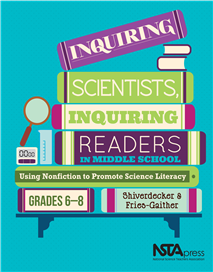 Inquiring Scientists, Inquiring Readers in Middle School: Using Nonfiction to Promote Science Literacy, Grades 6-8 by Terry Shiverdecker and Jessica Fries-Gaither offers strategies for integrating science and literacy instruction alongside ten in-depth units that are aligned with both the Next Generation Science Standards and the Common Core State Standards, English Language Arts.
Inquiring Scientists, Inquiring Readers in Middle School: Using Nonfiction to Promote Science Literacy, Grades 6-8 by Terry Shiverdecker and Jessica Fries-Gaither offers strategies for integrating science and literacy instruction alongside ten in-depth units that are aligned with both the Next Generation Science Standards and the Common Core State Standards, English Language Arts.
Middle school is a critical time in a child’s educational career. “We know that today’s students often arrive in middle school with specific needs in terms of reading and writing, which can frustrate teachers who have not received subject-specific guidance in meeting those needs,” the authors state in the book’s introduction.
The book is meant to integrate literacy lessons in a meaningful way without losing the focus on science. “We strongly believe that any effort to integrate literacy into science instruction must do so while still preserving the quality of the science instruction itself. In our approach, literacy activities support the acquisition of science content through inquiry-based instruction. They do not replace active engagement with data with reading about science concepts,” write Shiverdecker and Fries-Gaither.
Each unit includes a range of activities that have students exploring, engaging, explaining, and doing activities such as writing blog posts, conducting research, and using graphic organizers.
For example, in the lesson “Nature’s Light Show: It’s Magnetic!”(chapter 10) students learn about the Northern and Southern Lights through a combination of hands-on investigation and reading assignments. The unit asks the question, “What causes Earth’s aurora?” Students will have a chance to summarize and synthesize the ideas in a nonfiction text, draw and describe Earth’s magnetic field, and explain the phenomenon of the aurora.
In addition to being a great tool for literacy, the book also addresses a range of intriguing topics that will interest middle school students, such as animal and plant cell structure, genetic testing, and the relationship between sunlight and the seasons.
Check out the free sample chapter “Landfill Recovery” and get your copy of Inquiring Scientists, Inquiring Readers. This release is a follow-up to Fries-Gaither and Shiverdecker’s successful book for grades 3-5.
Follow NSTA
Save
Reading can be fun. For science-loving kids, using science-based texts can be an exciting way to increase understanding of concepts. A new NSTA Press book provides a plethora of ways to use nonfiction texts for inquiry-based science instruction.
REcharge Labs: Solar Cork Boat Kit
By Edwin P. Christmann
Posted on 2016-12-06
REcharge Labs: Solar Cork Boat Kit
Introduction
Teaching about solar energy in a present-day science classroom is an interesting way to have students adhere to the NGSS Standards, i.e., 4-PS3-4. Undoubtedly, new concerns on how we power our homes and businesses have bolstered research for alternatives to replace declining fossil fuels. Moreover, engaging students in activities that explore solar energy and studying ways to exploit the Sun’s energy is a creative and fun way to motivate students.
As an example, REcharge Labs offers a variety of resources that explore wind and solar power. We selected the Solar Cork Boat Kit, which demonstrates how energy from the Sun can be harnessed to do work. REcharge Labs explains that when doing this activity students “Learn basic solar circuitry to connect a motor to the solar panel, then use simple engineering design to make paddles that propel the boat as far and as fast as possible.”
The kits comes with learning objectives, materials, a list of additional supplies, and an excellent activity overview that can be used by teachers for lesson planning. Here are the directions included with the kit:
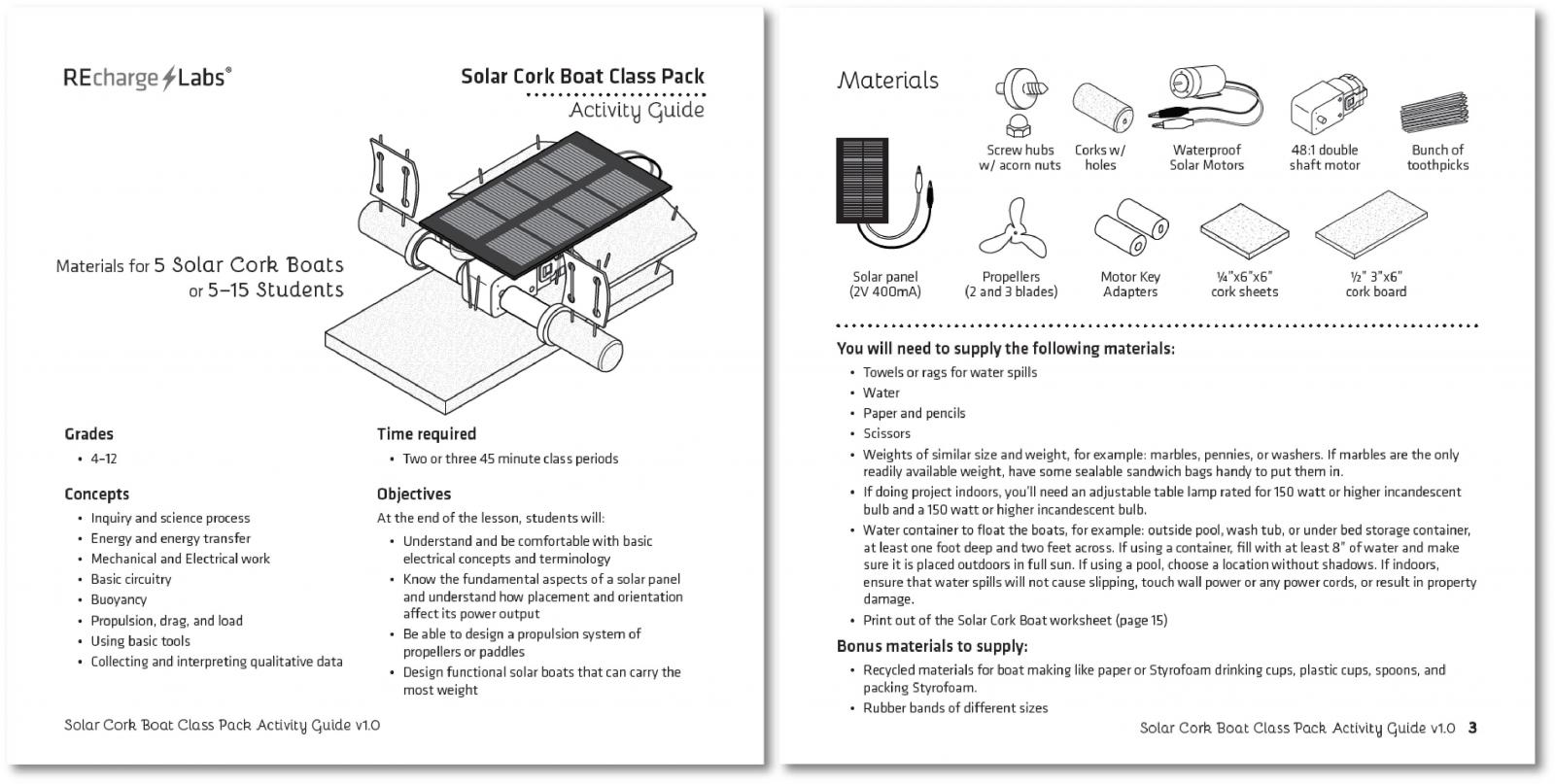
We found that during assembly of the project, the kit gives students the opportunity to learn essential scientific concepts and highlights essential critical thinking skills. For example, students can learn electrical terminology as it relates to solar energy’s transformation from a light source to an electrical motor. The span of developmental levels ranges between second and twelfth grades, which adds flexibility to the integration of this dynamic classroom activity.
As mentioned earlier, the great thing about using this product in the classroom is that it enables teachers to easily modify their lesson planning and it offers a hands-on approach to learning. For example, this kit could be used with a group of five students in the classroom or it could be a great homework project that is finished outside of the classroom. Whatever the case, constructing the boat will challenge students with engineering and science problems the go beyond solar energy. For example, students will have to consider buoyancy, water displacement, density, and challenge themselves with how to propel their vessel across the water. However, as a suggestion, students who place the constructed boat in a pond should consider how to retrieve it before its voyage. Otherwise, they will be sent back to the drawing board…
Conclusion
The Solar Cork Boat Kit is an exciting and relevant product for students across a wide-range of grade-levels. As our society continues to explore the uses of renewable energy, REcharge’s Solar Cork Boat Kit offers a learning opportunity that is of considerable interest for students. Moreover, it seems that this topic extends beyond its level of interest and could bolster plans for a better future. Undoubtedly, the Solar Cork Boat Kit offers teachers many ways of engaging students beyond lectures and involves students in the active examination of possible new forms of energy related technology applications! Without question, this activity is one that students will never forget!
Materials
This kit includes:
Solar panel
Screw hubs with acorn nuts
Corks with holes
Waterproof solar motors
48:1 double shaft motor
Toothpicks
Propellers (2 and 3 blades)
Motor key adaptors
Cork sheets
Cork board
NOT included:
Towels or rags for water spills
Water and containers
Paper and pencils
Scissors
Weights
Rubber Bands
Additional Equipment Needed:
If doing the project indoors, you’ll need an adjustable table lamp rated for 150 watt or higher incandescent bulb and a 150 watt or higher incandescent bulb.
Estimated Cost:
Single $30.00
Class (5) $135.00
http://www.rechargelabs.org/solar-cork-boat
Edwin P. Christmann is a professor and chairman of the secondary education department and graduate coordinator of the mathematics and science teaching program at Slippery Rock University in Slippery Rock, Pennsylvania. Anthony Balos is a graduate student and a research assistant in the secondary education program at Slippery Rock University in Slippery Rock, Pennsylvania.
REcharge Labs: Solar Cork Boat Kit
Introduction
The Texas Instruments TI-Innovator Hub: A Magic Box to Code
By Martin Horejsi
Posted on 2016-12-05
The TI-Innovator Hub is essentially a micro controller system offering plug-and-play interaction with some TI graphing calculators. Using a coding language entered on the keypad of Ti-84 Plus CE and better calculators, the TI-Innovator Hub will respond accordingly. While maybe not the most exciting description in a world of Lego Robotics and iPad Apps, the TI-Innovator Hub offers a practical coding interface that does not hide behind a layer of graphics or charming drag-and-drop commands. Instead the TI-Innovator Hub is a realistic introduction to coding because it is command line coding at its best.
While there are some shortcuts and menus with the TI-Innovator Hub, the experience is much closer to numerical value coding rather than sliding switches and Likert-selections. Using the TI-Innovator Hub gives students a soft landing (but not too soft) into the programing experience by using the Ti calculator to command the TI-Innovator™ Hub’s actions. The commands in the code can make the TI-Innovator™ Hub react in a hopefully predictable manner. And it is within that predictability that students learn to write and read computer code.

10 Minutes of Code All Week Long
This very week marks Computer Science Education Week, and Texas Instruments is kicking off the week with a excellent 16 minute video about their 10 Minutes of Code. Here is a link to Ti’s Facebook page for their calculators including the Code Promotions.

Gateway Gadget
The TI-Innovator Hub is also a gateway gadget into science, technology, engineering, and math (STEM) concepts. While STEM is hardly four distinct subject matter areas, but instead four different corners of the same square. You cannot separate the STEM components from each other, and cannot move far from one without more deeply entering the general territory of another.

The input/output (I/O) options on the TI-Innovator™ Hub include three inputs, three outputs, 10 breadboard ports, one red/green/blue LED light, a light brightness sensor, and a speaker for sound output. Build-quality of the TI-Innovator Hub is exceptional with the solid plastic housing capped with a transparent shell over the circuit board allowing complete visibility of the transistors and connections. Or in Ti-parlance, “To look under the hood.” Compatible interfaces include the TI-84 Plus CE, the TI-Nspire CX and CX CAS all running the necessary software.

Take 10, They’re Small
The concept of 10 Minutes of Code is a good one. The timeframe is a bite-sized piece of effort that neither patronizes the process, nor scares away the code timid. But depending on a student’s familiarity with the alpha-numeric layout and operation of the Ti graphing calculators, the first rodeo with the TI-Innovator Hub might run into overtime as a particular button is located. But once the repetition of input has run its course, the students will be tapping away with more excitement and less searching.
Ti provides some excellent resources for their 10 Minutes of Code that offer just enough of a push to keep going but not so much as to lead the students blindly into data entry without understanding. And the icing on the cake is that once a successful directed outcome is achieved, the instructions encourage the student to change things in order to experience the degree and placement of control (number variables), as well as to better understand the physics of the output whether light, sound or sensitivity.
To tell the truth, in a world of instant media, iPads and the Home Depot aisles filled with Internet-of-Things things, the TI-Innovator Hub at a mere 190 cubic centimeters and a density around 0.7 gm/cm^3 made me a little skeptical that this plastic box could really deliver the coding excitement that would attract and keep the attention of the average STEM student. In reality, the TI-Innovator Hub delivered a surprisingly effective program that showed off both a clean pathway to learning to code, as well as a dramatic display of professional grade educational tool. Like the family of Ti Graphing Calculators, they quickly become indispensable learning object that far exceed the sum of its parts.
The entry-level coding exercise was a simple challenge (to coin an oxymoron) that had just the right amount of coding difficulty and rewarding interaction. I mean just how exciting could something really be today that blinks and beeps after a generous 10 minutes of sequential button pushing? Actually quite a bit given the feelings of accomplishment as each successful and sequentially more advanced coding task is rewarded with the desired output. There’s just something primitively satisfying about entering code in command line fashion compared to drag-and-drop. And even better, once the initial task is successful, the TI-Innovator Hub invites the student to tweak the variables becoming even more intimate with the coding process.
As a student’s prowess with coding and STEM increases, the virtually unlimited connectivity of the TI-Innovator Hub drops the boundaries of capability directly upon the student’s imagination and curiosity.
One of the things that actual coding such as that required by the TI-Innovator Hub has over spiffy touch apps on a shiny tablet is a purity of language spoken though an undecorated interface. In some ways, coding the TI-Innovator Hub reminds me of learning ancient outdoor skills. Yes there can be extreme science while working with a transparent interface. I remember reading about the famed physicist Richard Feynman who describe being more impressed with a cobbled-together cyclotron, one with exposed wires and open circuit panels, much more than a highly polished one in a fancy lab. Feynman felt that the operators of the “open source” accelerator knew more of what they were doing because of their ability to manipulate the machine. Who knows if the folks running the shiny enclosed machine even knew how it worked? Well, that was Feynman’s reasoning at the time anyway.
From any perspective, the Texas Instruments TI-Innovator Hub is ready to take your students from never coded to coding confidence in just 10 magical minutes.
The TI-Innovator Hub is essentially a micro controller system offering plug-and-play interaction with some TI graphing calculators. Using a coding language entered on the keypad of Ti-84 Plus CE and better calculators, the TI-Innovator Hub will respond accordingly. While maybe not the most exciting description in a world of Lego Robotics and iPad Apps, the TI-Innovator Hub offers a practical coding interface that does not hide behind a layer of graphics or charming drag-and-drop commands.
#NSTA16 Columbus: Prizes for Everyone
By Korei Martin
Posted on 2016-12-05
Science teachers from all over the world came to #NSTA16 Columbus to become a champion of science! They heard from amazing speakers like science evangelist Ainissa Ramirez and gained knowledge that they will share with their colleagues and use in the classroom back at home. They also left the exhibit hall with a wealth of great things ranging from SouthWest Airline tickets to our National Conference in LA to sheep brains. Here’s our favorite tweets from the week—thank you all for sharing!
I loved being able to be a part of this board in Nashville, and now in Columbus! #OnlyatNSTA #NSTA16 pic.twitter.com/SVYdZrAS3K
— Kristal Dupler (@MrsDupler) December 2, 2016
Fun in Columbus #ONLYatNSTA pic.twitter.com/57qrzSRh6G
— Catina Stecz (@steczscience) December 3, 2016
Our car won! #OnlyAtNSTA #NSTA16 pic.twitter.com/W98kCnWAhk
— Kristy Mishler (@MishScience8) December 2, 2016
#OnlyAtNSTA can you get all this awesome #science loot! Excited to see what tomorrow has in store! #NSTA16 pic.twitter.com/LBsF0Ndovp
— Jessica L. Caton, MS (@fowl_love) December 1, 2016
Thank you @NSTA for the gift card! So excited and grateful! #OnlyAtNSTA #NSTA16 #winner pic.twitter.com/oJpPVKjKXr
— Stephanie Bianchi (@miss_sbianchi) December 1, 2016
#onlyatNSTA pic.twitter.com/Wtxm50UDjA
— Chantel Kornegay (@Sciflichanny) December 2, 2016
#OnlyAtNSTA pic.twitter.com/bz45LUhEK7
— Jen Mohlman Peterman (@JenMohlman) December 2, 2016
“Be A STEM Hero…” #OnlyatNSTA #NSTA16 pic.twitter.com/N05X2FJKyw
— Kristal Dupler (@MrsDupler) December 1, 2016
Congrats to our @SouthwestAir round-trip ticket winner Nicole Kiefer! #ONLYatNSTA pic.twitter.com/g2UEr7AkXT
— NatSciTeachAssoc (@NSTA) December 5, 2016
Brains! Brains! Brains! #ONLYatNSTA pic.twitter.com/yH9ze2J9XO
— NatSciTeachAssoc (@NSTA) December 5, 2016
Future NSTA Conferences
2017 National Conference
STEM Forum & Expo
Follow NSTA
Science teachers from all over the world came to #NSTA16 Columbus to become a champion of science! They heard from amazing speakers like science evangelist Ainissa Ramirez and gained knowledge that they will share with their colleagues and use in the classroom back at home. They also left the exhibit hall with a wealth of great things ranging from SouthWest Airline tickets to our National Conference in LA to sheep brains. Here’s our favorite tweets from the week—thank you all for sharing!



